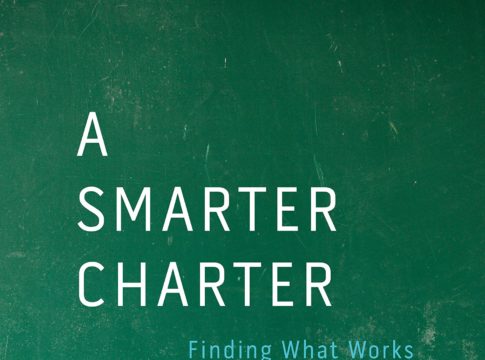Left Back: A Century of Failed School Reforms by Diane Ravitch
Simon and Schuster, 2000, $30; 534 pages (including notes and index).
As reviewed by Gerald Grant
Left Back will be misread by some as simply another bashing of progressive education when, in fact, Diane Ravitch laments the failure to realize the ideals of the early progressives. In her acknowledgements, she virtually paraphrases the most famous progressive intellectual, John Dewey, in extolling the private, progressive school her own children attended in New York City. While the choice is often cast as being between desiccated traditional disciplines and mindless child-centered progressive schools, the school her sons attended was both “academically vigorous and pedagogically venturesome.” Her children were inspired by a legendary teacher of Shakespeare, history teachers who “knew how to bring the past to life, and many others who dreamed up projects that fired their students’ minds and imaginations.” Ravitch points to Dewey’s school in Chicago (which closed in 1904, when Dewey left the University of Chicago for Columbia), the Lincoln School at Teachers College in New York, and the Winnetka, Illinois, public schools of the 1920s as admirable models of educational reform. They were joyful and engaging places for children that avoided the dull recitations of many traditional schools. Ravitch sees Winnetka as one of a few public school systems that made intelligent adaptations of progressive methods—individualizing instruction, motivating children by tapping into their interests, developing cooperative group projects—in order to achieve the traditional aims of producing knowledgeable and skilled students. Intelligent and able teachers held leadership roles in these schools. They tried to figure out the best ways to teach children, and they wrote new textbooks. They conducted research to see whether their methods worked. Their school day was structured to allow them time to meet and discuss data with their colleagues. In short, the best progressive schools treated teachers as professionals in a way that has rarely been equaled since.
| Dewey despaired over schools where children spent the day making nut bread but could not read. |
Progressive reforms failed because they were hijacked by experts and top-down reformers who believed that mass education could be had on the cheap. They thought they could employ low-paid and poorly trained teachers who would follow their manuals or stand aside while children’s interests were supposedly being served. After 40 years of watching the distortion of his ideals, Dewey despaired over schools where children spent the day making nut bread but could not read. He scolded followers who let pupils respond to things “according to their own desires” without the intelligent guidance of teachers. “Now such a method is really stupid,” said Dewey, in perhaps the clearest sentence he ever wrote.
First came the zealots of social efficiency such as W.W. Charters and John Franklin Bobbitt, who saw the progressive movement as a vehicle for the wholesale ditching of the traditional subject-matter curriculum. They would substitute vocational training for the jobs then in existence. Since only 6 percent of the boys would ever become professionals, and only 7 percent of the girls would become teachers (“the rest would work as ‘servants, cooks, waitresses, laundresses, saleswomen’ ”), the other 90-odd percent needed vocational training, Bobbitt argued. The curriculum would be derived from hundreds of job analyses, such as what a department store credit clerk actually did: “meets people who desire to open accounts, asks them for information, writes form letters or telephones for references.” Their work was buttressed by the development of mass IQ testing, which gave anxious school administrators a “scientific” means to assign children to the vocational track. Lewis Terman of Stanford believed that the IQ test measured innate and unchanging intelligence. He wrote in his landmark study, “The dull remain dull, the average remain average, and the superior remain superior.” The journalist and public intellectual Walter Lippmann attacked Terman in an article in the New Republic in 1922, arguing that he could not imagine “a more contemptible proceeding than to confront a child with a set of puzzles, and after an hour’s monkeying with them, proclaim to the child and his parents, that here is a C-individual.” But IQ testing became the norm: the short history of American education in the 20th century is that Terman won and Lippmann and Dewey lost. Even as late as 1959, Harvard president James B. Conant argued that only 15 percent of high school students had the mental ability to take rigorous mathematics, science, and foreign language courses. Conant repeatedly warned school counselors that they must be prepared to persuade “overambitious parents” that their children were not “academically talented.” Ravitch is aware that the rhetoric of latter-day progressives changed more than did actual practice in the schools, where many teachers paid little attention to their theories. But there is strong evidence for her central argument that the progressive reforms championed by Dewey not only failed but also became the shell for an inversion of his ideals. Under the name of democratic education for all, only a minority received the grounding in the liberal arts that all children need in order to use their minds well and to enjoy a full life, whatever their eventual occupation. Perhaps half of the children who were included in the massive expansion of American education in the last century—and especially the poor and the black—were tragically “left back” in dumbed-down curriculum tracks. Now many of them face high-stakes tests of subjects they were never properly taught.
What would American education look like if we had shunned IQ tests as a means of sorting children, used higher salaries to attract more able recruits to teaching, adapted the kind of engaging cooperative inquiry among both teachers and pupils that Dewey favored, and expected all children to do rigorous mathematics and science beginning in elementary school? Probably more like the Japanese education system.
–Gerald Grant is a professor of education and sociology at Syracuse University.
As reviewed by Jeffrey Mirel
On a recent trip to Kalispell, Montana, a front-page story in the local newspaper caught my eye. Apparently the town’s high school faced serious problems, among the worst a dropout rate of about “10 percent a year.” When interviewed, the superintendent of schools focused on the “largely college-directed curriculum” as a main reason why young people were leaving school early. The solution, he declared, was to provide “equal opportunity” by making “an equal effort for the kids who are not going to college”—in other words, to create new, nonacademic programs for these students.
As Diane Ravitch reveals in Left Back, educational leaders have been making this claim for most of the 20th century, often using exactly the same words and phrases. Their reforms, in turn, have successfully steered most American students away from a liberal education, what Ravitch defines as “the systematic study of language and literature, science and mathematics, history, the arts and foreign languages.” Thus these students have been denied the knowledge and skills necessary for full participation in American life. That educational leaders have routinely justified these policies on the grounds that they were enhancing equal opportunity and democratizing our schools is one of the great ironies that Ravitch identifies and explores. At the heart of that irony, and the subject of Left Back, is progressive education, a philosophy of and approach to pedagogy that inspired a host of educational leaders throughout the 20th century.
Developed in reaction to the sterile formalism and rigid discipline that characterized American public education in the early 1900s, progressive education promised to transform American schools by making learning active and meaningful. Ravitch applauds many of the improvements that progressives introduced, such as attending “to the needs of individual children, emphasizing students’ motivation and understanding, and making the schools responsible for the health and general welfare of children.” But most of Left Back is a devastating and dead-on accurate description of how this promising philosophy degenerated into a series of interrelated propositions that, Ravitch argues, gradually undercut the intellectual and cultural foundations of American schooling. These propositions include the Rousseauian belief in the innately wise child, the conviction that children gain more from immediate experience than from learning about things that are distant from them in time and space, and that all topics and subjects in a curriculum must be justified by their immediate usefulness. These ideas combined to become what is certainly one of the strangest oxymorons in the history of American education, an educational philosophy that championed anti-intellectualism.
Ravitch finds that even the great philosopher John Dewey eventually succumbed to the lure of Rousseauian romanticism, in essence rejecting his own argument in The Child and the Curriculum that the best education occurs when the natural curiosity of the child interacts with the organized curriculum. Dewey occasionally chastised his colleagues for becoming too child-centered. But throughout his long career, Ravitch maintains, Dewey routinely disparaged traditional subject-centered education and often stoked the rhetorical pyres built for such defenders of liberal education as William Chandler Bagley and Robert Maynard Hutchins.
Ravitch tracks how the anti-intellectualism of progressive educational leaders translated into policies and programs that restricted students’ access to traditional academic subjects. After dispensing with Greek and Latin early last century, progressives campaigned relentlessly to discredit all the basic components of liberal education, condemning modern languages, history, geography, literature, higher mathematics, and laboratory sciences as elitist, inappropriate, and even damaging for all but a small number of college-bound students. They urged school districts to reform curricula by creating practical, relevant courses (such as shop, home economics, and driver’s education) based on students’ needs and interests. As Ravitch cogently argues, these progressive policies contributed more to educational inequality than the reverse. She demonstrates, for example, how progressive policies thwarted efforts by black parents to place their children in academically oriented programs and instead aided efforts (many of which were explicitly racist) to steer black students into vocational and general track courses that led directly to subservient social and economic roles.
Ravitch’s argument that progressive philosophy is still a powerful force in American schools—particularly in colleges of education—subtly but strongly pushes school reform in a new direction. It calls into question a central tenet of many school reform initiatives—that educational improvement will come through changes in school structure and governance. Reform efforts such as school choice, charter schools, reconstituting schools, and reducing class size all rest on the belief that changes in structure or governance will result in higher student achievement. But Ravitch’s book reveals that as necessary as these changes may be, revitalizing our schools ultimately depends more on restoring liberal education to its rightful place at the center of the American curriculum and breaking the grip of harmful progressive ideas (particularly the progressive antipathy to subject matter) on educational policy and practice.
–Jeffrey Mirel is a professor of education history at the University of Michigan, Ann Arbor.




